- Accueil
- Pages cachées
- 24 AVRIL 2023 NEWS
24 AVRIL 2023 NEWS
INSTITUT SUPERIEUR D'ANTHROPOLOGIE
INSTITUTE OF ANTHROPOLOGY
ONLINE COURSES / COURS A DISTANCE
DEBUT COURS : JUIN 2023
REGISTER NOW
NORVEGE –  Salhushaugen - Archaeologists in Norway, a 20-meter-long Viking ship has been discovered using georadar on a mound previously believed to be empty. The mound was explored a little over a hundred years ago by archaeologist Haakon Shetelig. The result was just 15 wooden spades and some arrowheads. The archaeologist Haakon Shetelig was incredibly disappointed when he did not find a Viking ship during an excavation of the Salhushaugen gravemound in Karmøy in Western Norway. And nothing more was done with this mound. In June 2022, archaeologists decided to search the area using ground-penetrating radar or georadar – a device that uses radio waves to map out what lies below the surface of the ground. However, georadar results revealed that Shetelig simply did not dig deep enough. “We’ve been working on this for a year, so we feel pretty confident about our findings,” says Reiersen, who was project manager for the field work. Publications are yet to come, but the data from the georadar surveys are quite clear, according to Reiersen. “The georadar signals clearly show the shape of a 20-metre-long ship. It’s quite wide and reminiscent of the Oseberg ship,” he says. The Oseberg ship is about 22 metres long and a little over 5 metres wide. Furthermore, the ship-shaped signals are located in the mound’s center, exactly where the burial ship would have been. The likely explanation being that it is in fact the burial ship. The ship is also reminiscent of yet another Viking ship found on Karmøy in 1886, the Storhaug ship, and finds made in connection to the excavation of this.
Salhushaugen - Archaeologists in Norway, a 20-meter-long Viking ship has been discovered using georadar on a mound previously believed to be empty. The mound was explored a little over a hundred years ago by archaeologist Haakon Shetelig. The result was just 15 wooden spades and some arrowheads. The archaeologist Haakon Shetelig was incredibly disappointed when he did not find a Viking ship during an excavation of the Salhushaugen gravemound in Karmøy in Western Norway. And nothing more was done with this mound. In June 2022, archaeologists decided to search the area using ground-penetrating radar or georadar – a device that uses radio waves to map out what lies below the surface of the ground. However, georadar results revealed that Shetelig simply did not dig deep enough. “We’ve been working on this for a year, so we feel pretty confident about our findings,” says Reiersen, who was project manager for the field work. Publications are yet to come, but the data from the georadar surveys are quite clear, according to Reiersen. “The georadar signals clearly show the shape of a 20-metre-long ship. It’s quite wide and reminiscent of the Oseberg ship,” he says. The Oseberg ship is about 22 metres long and a little over 5 metres wide. Furthermore, the ship-shaped signals are located in the mound’s center, exactly where the burial ship would have been. The likely explanation being that it is in fact the burial ship. The ship is also reminiscent of yet another Viking ship found on Karmøy in 1886, the Storhaug ship, and finds made in connection to the excavation of this.
https://arkeonews.net/a-viking-ship-discovered-at-salhushaugen-cemetery-in-norway/
KAZAKHSTAN – 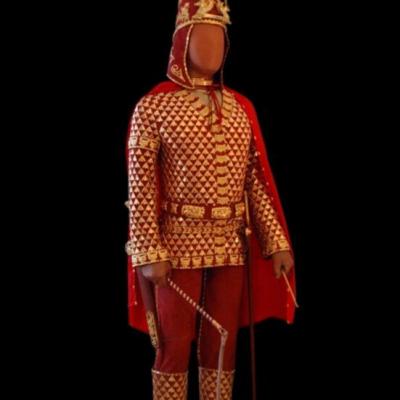 Ayagoz - Rare gold jewelry, remains of bird of prey, and 3,000 other items were found in the mounds in the Ayagoz district of the Abai Region at a depth of three meters, reported the Abai Region’s akimat (administration) on April 18. The discovered exhibits, which date back to the eighth and ninth centuries BC, were handed over to Semey’s regional museum of local history. A group of archaeologists has been working in this region since 2021. They have explored monuments of the Bronze Age and the Early Iron Age, and have discovered nearly 100 archeological sites, including mounds, settlements, and rock carvings. According to Omarov, the discovered items are of great historical significance for the country because they allow people to learn about population migration, establish a link between Zhetysu, a region in south-eastern Kazakhstan, and eastern and central Kazakhstan, and see how people were resettled in central Kazakhstan via Bozai, Tarbagatai, and Chigistau. “We excavated three mounds, one of which belonged to the aristocracy and stood around three meters tall. We discovered gold artifacts in this plundered mound, including gold beads and plates etched with animal images. Laboratory tests revealed that the golden artifacts are from the eighth to ninth centuries BC, implying that the earliest Saka burial mounds were exhumed,” he said. Of the three types of beads, 3,000 units were found at a considerable depth of the burial mounds. Overall, archeologists collected nine bags of these beads and sent them to Almaty for further assessment. Earlier, archaeologists found similar ancient brooches with decorative animal images in eastern and central Kazakhstan. During our excavation, we discovered several tumuli with ridges that belong to Tasmolin culture and several settlements of the Early Iron Age,” said Omarov.
Ayagoz - Rare gold jewelry, remains of bird of prey, and 3,000 other items were found in the mounds in the Ayagoz district of the Abai Region at a depth of three meters, reported the Abai Region’s akimat (administration) on April 18. The discovered exhibits, which date back to the eighth and ninth centuries BC, were handed over to Semey’s regional museum of local history. A group of archaeologists has been working in this region since 2021. They have explored monuments of the Bronze Age and the Early Iron Age, and have discovered nearly 100 archeological sites, including mounds, settlements, and rock carvings. According to Omarov, the discovered items are of great historical significance for the country because they allow people to learn about population migration, establish a link between Zhetysu, a region in south-eastern Kazakhstan, and eastern and central Kazakhstan, and see how people were resettled in central Kazakhstan via Bozai, Tarbagatai, and Chigistau. “We excavated three mounds, one of which belonged to the aristocracy and stood around three meters tall. We discovered gold artifacts in this plundered mound, including gold beads and plates etched with animal images. Laboratory tests revealed that the golden artifacts are from the eighth to ninth centuries BC, implying that the earliest Saka burial mounds were exhumed,” he said. Of the three types of beads, 3,000 units were found at a considerable depth of the burial mounds. Overall, archeologists collected nine bags of these beads and sent them to Almaty for further assessment. Earlier, archaeologists found similar ancient brooches with decorative animal images in eastern and central Kazakhstan. During our excavation, we discovered several tumuli with ridges that belong to Tasmolin culture and several settlements of the Early Iron Age,” said Omarov.
ANGLETERRE – 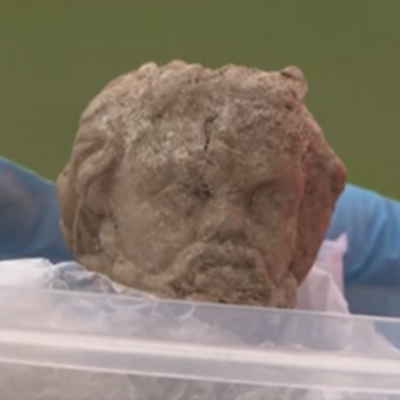 Cockermouth - An archaeological dig in Cockermouth, England, the United Kingdom, discovered a bust of the ancient Greek mythological figure, Silenus, who was closely associated with the God of fertility, wine and pleasure – Dionysus. “This particular discovery by itself is a remarkable find. It is a wonderful survivor of Roman craftsmanship and artistry,” Finds Officer, Julie Shoemark, said. “The size of the weight is definitely surprising. These weights usually tend to be a little bit smaller. I would say one in this condition and one depicting Silenus particularly is a little more unusual. I have only found one good parallel for him.” Silenus is said to have been the old rustic god of wine-making and drunkenness, and the foster-father of Dionysus.
Cockermouth - An archaeological dig in Cockermouth, England, the United Kingdom, discovered a bust of the ancient Greek mythological figure, Silenus, who was closely associated with the God of fertility, wine and pleasure – Dionysus. “This particular discovery by itself is a remarkable find. It is a wonderful survivor of Roman craftsmanship and artistry,” Finds Officer, Julie Shoemark, said. “The size of the weight is definitely surprising. These weights usually tend to be a little bit smaller. I would say one in this condition and one depicting Silenus particularly is a little more unusual. I have only found one good parallel for him.” Silenus is said to have been the old rustic god of wine-making and drunkenness, and the foster-father of Dionysus.
MEXIQUE – 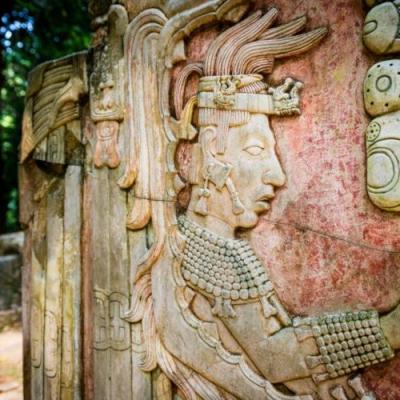 Maya - Arguably the most enigmatic of the Maya calendar cycles, the 819-day count has challenged modern scholars for decades. Even today it is not completely explained and there are several areas for further research, including its relationship with the synodic periods of the planets visible to the naked eye. Earlier research has demonstrated a four-part, color-directional scheme for the 819-day count such that each of the calendar stations progress in increments of 819 days in cycles of 4 × 819 days. Although prior research has sought to show planetary connections for the 819-day count, its four-part, color-directional scheme is too short to fit well with the synodic periods of the visible planets. By increasing the calendar length to 20 periods of 819-days a pattern emerges in which the synodic periods of all the visible planets commensurate with station points in the larger 819-day calendar.
Maya - Arguably the most enigmatic of the Maya calendar cycles, the 819-day count has challenged modern scholars for decades. Even today it is not completely explained and there are several areas for further research, including its relationship with the synodic periods of the planets visible to the naked eye. Earlier research has demonstrated a four-part, color-directional scheme for the 819-day count such that each of the calendar stations progress in increments of 819 days in cycles of 4 × 819 days. Although prior research has sought to show planetary connections for the 819-day count, its four-part, color-directional scheme is too short to fit well with the synodic periods of the visible planets. By increasing the calendar length to 20 periods of 819-days a pattern emerges in which the synodic periods of all the visible planets commensurate with station points in the larger 819-day calendar.
DANEMARK – 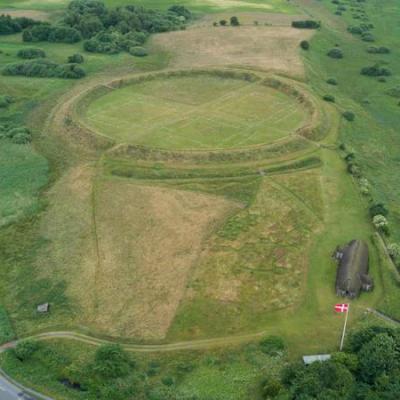 Fyrkat - A group of metal detectorists examining a field near the Viking castle Fyrkat have discovered two remarkable treasures. The two Viking treasures were buried a few meters apart, and both contained many small silver coins and cut-up silver jewelry, which probably served as a means of payment by weight. Altogether, the two treasures include up to 300 pieces of silver, of which approximately 50 are whole coins.,Fyrkat is a former Viking ring castle in Denmark, dating from c. 980 AD. About 1,000 years ago, legendary King Harald Bluetooth built several impressive Viking fortresses.
Fyrkat - A group of metal detectorists examining a field near the Viking castle Fyrkat have discovered two remarkable treasures. The two Viking treasures were buried a few meters apart, and both contained many small silver coins and cut-up silver jewelry, which probably served as a means of payment by weight. Altogether, the two treasures include up to 300 pieces of silver, of which approximately 50 are whole coins.,Fyrkat is a former Viking ring castle in Denmark, dating from c. 980 AD. About 1,000 years ago, legendary King Harald Bluetooth built several impressive Viking fortresses.
https://www.ancientpages.com/2023/04/22/viking-treasure-fyrkat-ring-castle/
EQUATEUR – 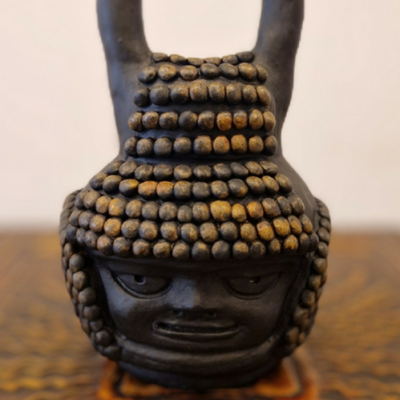 Santa Ana-La Florida - Ecuador takes pride in its heritage as the origin place of cacoa — the key ingredient of chocolate — and the government has promoted the fact for decades. More recently, it has celebrated the discovery of ceramic jars in the upper Amazon region that have been determined to be vessels for cocoa beans. Archeological research in Ecuador indicates that Theobroma Cacoa, or simply cocoa, was first cultivated in an area where the Andes mountains meet the Amazon jungle. The Santa Ana-La Florida site, associated with the Mayo-Chinchipe culture, provided evidence of this discovery. The site, located in Palanda in southeast Ecuador, is where the oldest cocoa beans in the world were discovered. In October 2018, a scientific article title “The Use and Domestication of Theobroma Cacao during the mid-Holocene in the Upper Amazon” was published in the journal ”Nature Ecology & Evolution”. The research was conducted by 19 researchers from Canada, France and Ecuador. The analysis was done on a bottle with two handles, depicting the Spondylus shell from which the double image of a human being emerges, found at the Santa Ana-La Florida site. Starch granules from cocoa were discovered inside the bottle, which belonged to the Mayo Chinchipe culture, with a carbon-14 test dating of 3500 BC to 3330 BC, or 5300 – 5500 years ago. Parts of at least four bottles have been unearthed. The Mayo Chinchipe culture used processed cocoa as a significant social and symbolic component of their diet, interacting with the Andean region and Pacific coast civilizations, through which Amazonian cocoa was introduced to the Ecuadorian coast and eventually transported to Mexico and Mesoamerica, along with the Spondylus shell. The available evidence suggests that the Mayas and Aztecs of Mexico used cocoa from Ecuador to make a beverage known as “xcocolatl”; in the Nahuatl language, marking the beginning of chocolate’history.
Santa Ana-La Florida - Ecuador takes pride in its heritage as the origin place of cacoa — the key ingredient of chocolate — and the government has promoted the fact for decades. More recently, it has celebrated the discovery of ceramic jars in the upper Amazon region that have been determined to be vessels for cocoa beans. Archeological research in Ecuador indicates that Theobroma Cacoa, or simply cocoa, was first cultivated in an area where the Andes mountains meet the Amazon jungle. The Santa Ana-La Florida site, associated with the Mayo-Chinchipe culture, provided evidence of this discovery. The site, located in Palanda in southeast Ecuador, is where the oldest cocoa beans in the world were discovered. In October 2018, a scientific article title “The Use and Domestication of Theobroma Cacao during the mid-Holocene in the Upper Amazon” was published in the journal ”Nature Ecology & Evolution”. The research was conducted by 19 researchers from Canada, France and Ecuador. The analysis was done on a bottle with two handles, depicting the Spondylus shell from which the double image of a human being emerges, found at the Santa Ana-La Florida site. Starch granules from cocoa were discovered inside the bottle, which belonged to the Mayo Chinchipe culture, with a carbon-14 test dating of 3500 BC to 3330 BC, or 5300 – 5500 years ago. Parts of at least four bottles have been unearthed. The Mayo Chinchipe culture used processed cocoa as a significant social and symbolic component of their diet, interacting with the Andean region and Pacific coast civilizations, through which Amazonian cocoa was introduced to the Ecuadorian coast and eventually transported to Mexico and Mesoamerica, along with the Spondylus shell. The available evidence suggests that the Mayas and Aztecs of Mexico used cocoa from Ecuador to make a beverage known as “xcocolatl”; in the Nahuatl language, marking the beginning of chocolate’history.
https://cuencahighlife.com/ecuadors-claim-as-the-birthplace-of-cocao-and-chocolate-is-reinforced-by-ancient-ceramic-jars/
TURQUIE – 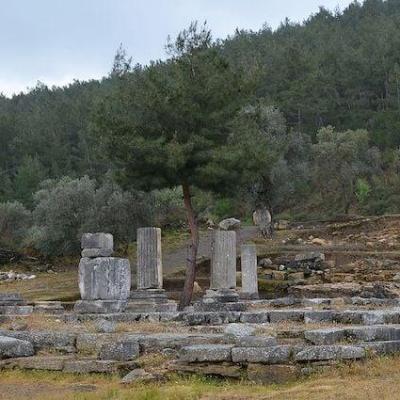 Hadrianopolis - Turkish archaeologists believe they will soon solve the mystery regarding the ancient Greek city of Hadrianopolis, located in the Eskipazar district of the Black Sea province of Karabuk, which was mysteriously abandoned. According to the researchers, Hadrianopolis was suddenly abandoned completely at some point in the seventh century AD. “This year’s excavations revealed that there was a sudden evacuation in the ancient city. We are trying to find out the reason—whether an earthquake happened, an invasion occurred or a big fire broke out. But we can certainly say that life here ended in the 7th century. There was not even a single person left in the ancient city,” Celikbas said to Hurriyet Daily News. The archeologist recounted that their excavations have unearthed a church, one of the oldest in Anatolia, with mosaics dating back to the fifth century AD. “We found very important figures on the mosaics. We found a panel with one bull figure, one lion figure and two peacocks. When we look at similar examples of these figures in Anatolia, the most complete example is the mosaic that we found in Hadrianopolis this year. We think that the church was dedicated to Roman emperors,” Celikbas explained. “Notable religious functionaries lived here. This year’s works unearthed many small findings from the 6th century. We are about to get more important results in our works. We are about to solve the mystery in the ancient city,” Celikbas declared. Hadrianopolis was inhabited in the late Hellenistic, Roman, and early Byzantine periods. Surface surveys have uncovered a total of 14 public buildings and other structures in the city. Two baths, two churches, a defense structure, rock tombs, a theater, an arched and domed structure, a monumental cultic niche, walls, a villa, other monumental buildings, and several religious buildings were found at the ancient site.
Hadrianopolis - Turkish archaeologists believe they will soon solve the mystery regarding the ancient Greek city of Hadrianopolis, located in the Eskipazar district of the Black Sea province of Karabuk, which was mysteriously abandoned. According to the researchers, Hadrianopolis was suddenly abandoned completely at some point in the seventh century AD. “This year’s excavations revealed that there was a sudden evacuation in the ancient city. We are trying to find out the reason—whether an earthquake happened, an invasion occurred or a big fire broke out. But we can certainly say that life here ended in the 7th century. There was not even a single person left in the ancient city,” Celikbas said to Hurriyet Daily News. The archeologist recounted that their excavations have unearthed a church, one of the oldest in Anatolia, with mosaics dating back to the fifth century AD. “We found very important figures on the mosaics. We found a panel with one bull figure, one lion figure and two peacocks. When we look at similar examples of these figures in Anatolia, the most complete example is the mosaic that we found in Hadrianopolis this year. We think that the church was dedicated to Roman emperors,” Celikbas explained. “Notable religious functionaries lived here. This year’s works unearthed many small findings from the 6th century. We are about to get more important results in our works. We are about to solve the mystery in the ancient city,” Celikbas declared. Hadrianopolis was inhabited in the late Hellenistic, Roman, and early Byzantine periods. Surface surveys have uncovered a total of 14 public buildings and other structures in the city. Two baths, two churches, a defense structure, rock tombs, a theater, an arched and domed structure, a monumental cultic niche, walls, a villa, other monumental buildings, and several religious buildings were found at the ancient site.
https://greekreporter.com/2023/04/22/ancient-greek-city-hadrianopolis/
FRANCE –  Fameck - Une nécropole a été mise au grand jour à Fameck, ZAC de la Feltière. C'est lors d'une fouille préventive avant la construction d'un lotissement que les archéologues ont découvert un monument funéraire circulaire datant du début de l'âge de Fer (entre 1500 et 500 ans avant notre ère) mais aussi des urnes funéraires, des ossements et des parures, datant du IIIe au Ier siècle avant notre ère, époque où les Fameckois étaient des... médiomatriques ! A l'époque des gaulois, les rites funéraires étaient bien différents des nôtres : "Le corps du défunt était placé sur un bucher funéraire avec des objets qui représentent le mort ou sa famille, plus le mort a un statut important plus il aura d'objet avec lui, on brûle l'ensemble et les fragments sont ensuite récupérés et placé dans une urne." C'est l'étude de ces objets et des amas osseux qui va permettre de déterminer le statut social, l'âge mais aussi le genre des défunts. Une étude réalisée en laboratoire. Sur cette nécropole? les archéologues ont par exemple prélevé une épée, mais aussi des parures (perles en verre etc.)
Fameck - Une nécropole a été mise au grand jour à Fameck, ZAC de la Feltière. C'est lors d'une fouille préventive avant la construction d'un lotissement que les archéologues ont découvert un monument funéraire circulaire datant du début de l'âge de Fer (entre 1500 et 500 ans avant notre ère) mais aussi des urnes funéraires, des ossements et des parures, datant du IIIe au Ier siècle avant notre ère, époque où les Fameckois étaient des... médiomatriques ! A l'époque des gaulois, les rites funéraires étaient bien différents des nôtres : "Le corps du défunt était placé sur un bucher funéraire avec des objets qui représentent le mort ou sa famille, plus le mort a un statut important plus il aura d'objet avec lui, on brûle l'ensemble et les fragments sont ensuite récupérés et placé dans une urne." C'est l'étude de ces objets et des amas osseux qui va permettre de déterminer le statut social, l'âge mais aussi le genre des défunts. Une étude réalisée en laboratoire. Sur cette nécropole? les archéologues ont par exemple prélevé une épée, mais aussi des parures (perles en verre etc.)
https://www.francebleu.fr/infos/societe/une-necropole-exceptionnelle-decouverte-a-fameck-9425310
FRANCE - 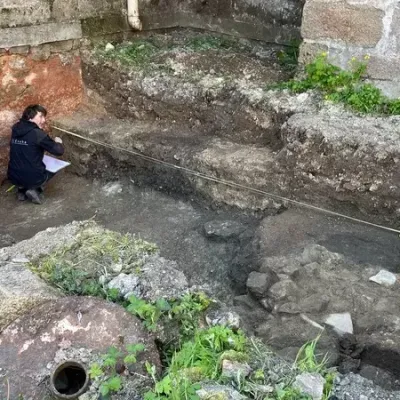 Saint-Junien - Des fouilles archéologiques préventives viennent d'avoir lieu au pied de la collégiale de Saint-Junien en Haute-Vienne. Elles ont permis de mettre au jour quelques traces du passé du cloitre au XIIème siècle. Il y a 800 ans, au pied de la collégiale de Saint-Junien, un cloître accueillait une communauté de chanoines soumis à la règle de Saint-Augustin là où, quelques années plus tôt, l'évêque de Limoges Rorice II avait fait construire un oratoire sur le tombeau de l'ermite Junien. Il ne reste plus de traces visibles de cet édifice mais mais des fouilles archéologiques viennent de mettre au jour des fondations, un puits et surtout des sépultures.
Saint-Junien - Des fouilles archéologiques préventives viennent d'avoir lieu au pied de la collégiale de Saint-Junien en Haute-Vienne. Elles ont permis de mettre au jour quelques traces du passé du cloitre au XIIème siècle. Il y a 800 ans, au pied de la collégiale de Saint-Junien, un cloître accueillait une communauté de chanoines soumis à la règle de Saint-Augustin là où, quelques années plus tôt, l'évêque de Limoges Rorice II avait fait construire un oratoire sur le tombeau de l'ermite Junien. Il ne reste plus de traces visibles de cet édifice mais mais des fouilles archéologiques viennent de mettre au jour des fondations, un puits et surtout des sépultures.
FRANCE – 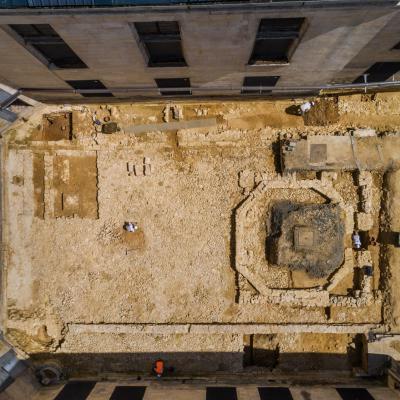 Villers-Cotterêts - Le château de Villers-Cotterêts comprend le Logis royal Renaissance constitué de quatre ailes principales encadrant une cour aménagée en jeu de Paume et une cour des Offices au sud, entourée par des bâtiments. Une première fouille a eu lieu au printemps/été 2020 autour du logis et dans la cour du jeu de Paume. Les opérations archéologiques se sont poursuivies, de novembre 2020 jusqu’à mars 2023, par la fouille de la Cour des Offices, des suivis de travaux dans le logis et une étude sur le bâti concernant l'ensemble des bâtiments. Les problématiques scientifiques principales concernent les aménagements liés au château construit par François Ier au XVIe siècle, les restructurations des XVIIe et XVIIIe siècles, et l'occupation du site durant le Moyen Âge, sujet très faiblement documenté par les archives. La méthode d’approche des vestiges de toutes ces périodes est singulière : pluridisciplinaire, elle se veut complète, mêlant fouille classique, accompagnement de tous les travaux (creusements dans le château, charpentes, maçonneries…), et étude de bâti intégrale sur les parois externes et internes de l’édifice. Au cours de la dernière période de fouille, les archéologues ont pu étudier le secteur encore non observé au sud du Logis royal. Les vestiges du système d'accès au château médiéval ont été mis au jour. Ce système se compose d'une tour-porche, située immédiatement devant l'entrée principale construite au XVIe siècle. Les vestiges permettent également de restituer au-devant de la tour-porche un pont-levis qui permettait d'enjamber le fossé sans eau. Son accès depuis l'extérieur, moins bien conservé, laisse envisager la construction probable de deux tourelles encadrant le chemin d’entrée.
Villers-Cotterêts - Le château de Villers-Cotterêts comprend le Logis royal Renaissance constitué de quatre ailes principales encadrant une cour aménagée en jeu de Paume et une cour des Offices au sud, entourée par des bâtiments. Une première fouille a eu lieu au printemps/été 2020 autour du logis et dans la cour du jeu de Paume. Les opérations archéologiques se sont poursuivies, de novembre 2020 jusqu’à mars 2023, par la fouille de la Cour des Offices, des suivis de travaux dans le logis et une étude sur le bâti concernant l'ensemble des bâtiments. Les problématiques scientifiques principales concernent les aménagements liés au château construit par François Ier au XVIe siècle, les restructurations des XVIIe et XVIIIe siècles, et l'occupation du site durant le Moyen Âge, sujet très faiblement documenté par les archives. La méthode d’approche des vestiges de toutes ces périodes est singulière : pluridisciplinaire, elle se veut complète, mêlant fouille classique, accompagnement de tous les travaux (creusements dans le château, charpentes, maçonneries…), et étude de bâti intégrale sur les parois externes et internes de l’édifice. Au cours de la dernière période de fouille, les archéologues ont pu étudier le secteur encore non observé au sud du Logis royal. Les vestiges du système d'accès au château médiéval ont été mis au jour. Ce système se compose d'une tour-porche, située immédiatement devant l'entrée principale construite au XVIe siècle. Les vestiges permettent également de restituer au-devant de la tour-porche un pont-levis qui permettait d'enjamber le fossé sans eau. Son accès depuis l'extérieur, moins bien conservé, laisse envisager la construction probable de deux tourelles encadrant le chemin d’entrée.
https://www.inrap.fr/fin-des-fouilles-archeologiques-au-chateau-de-villers-cotterets-aisne-17190#
ALLEMAGNE –  Fürstenberg - The excavation results confirmed what the geophysical measurements in the exposed area of the southern camp suburb suggested: two strikingly large buildings, each measuring at least 60 x 20 m. The excavation also provided further information: while one building was apparently made of half-timbered structures with a tiled roof and collapsed in a catastrophic fire, the second building was made of stone and was probably still used in Roman times as a quarry for newer buildings. Nevertheless, the remains of the foundation reveal that it was once one of the largest bathing buildings on the Rhine in the 1st century AD. Older surface finds from the remains of Roman stained glass windows, which came into fashion under Emperor Nero (54 – 69 AD) in the luxurious bathing complexes in Rome, also gave cautious indications of thermal baths. Since the camp and civilian settlement on the Fürstenberg were already destroyed in 70 AD, it shows how quickly the latest technology was implemented in the capital on Rome’s northern Rhine border. However, the excavation also revealed that the finds in the southern area, i.e. further down the slope, lie directly below the plow horizon and are highly endangered in their preservation. The fact that the civilian settlement could even be the country town described by the Roman historian Tacitus (around 58 – around 120 AD), which arose not far from the legionary camp, was shown in the first measurements in cooperation with the German Archaeological Institute no one expected. But the picture provided by the measurement methods, aerial photographs, surface finds and the excavation is coming together. “So far, researchers have not agreed whether Tacitus described the predecessor city of Colonia Ulpia Traiana or whether the settlement was to be found on the Fürstenberg,” explains Steve Bödecker, scientific officer and Limes coordinator of the LVR-ABR, “But possibly described Tacitus actually the canabae, i.e. the civilian camp suburb in the immediate vicinity of the legionary camp. The planned layout with street system and the extensive buildings make this likely.” According to Tacitus, the Romans themselves – in connection with the Bataver uprising in 68/70 AD – had deliberately destroyed the country town in question so that the enemy could not use it. This could be the reason for the traces of the fire disaster found during the excavation.
Fürstenberg - The excavation results confirmed what the geophysical measurements in the exposed area of the southern camp suburb suggested: two strikingly large buildings, each measuring at least 60 x 20 m. The excavation also provided further information: while one building was apparently made of half-timbered structures with a tiled roof and collapsed in a catastrophic fire, the second building was made of stone and was probably still used in Roman times as a quarry for newer buildings. Nevertheless, the remains of the foundation reveal that it was once one of the largest bathing buildings on the Rhine in the 1st century AD. Older surface finds from the remains of Roman stained glass windows, which came into fashion under Emperor Nero (54 – 69 AD) in the luxurious bathing complexes in Rome, also gave cautious indications of thermal baths. Since the camp and civilian settlement on the Fürstenberg were already destroyed in 70 AD, it shows how quickly the latest technology was implemented in the capital on Rome’s northern Rhine border. However, the excavation also revealed that the finds in the southern area, i.e. further down the slope, lie directly below the plow horizon and are highly endangered in their preservation. The fact that the civilian settlement could even be the country town described by the Roman historian Tacitus (around 58 – around 120 AD), which arose not far from the legionary camp, was shown in the first measurements in cooperation with the German Archaeological Institute no one expected. But the picture provided by the measurement methods, aerial photographs, surface finds and the excavation is coming together. “So far, researchers have not agreed whether Tacitus described the predecessor city of Colonia Ulpia Traiana or whether the settlement was to be found on the Fürstenberg,” explains Steve Bödecker, scientific officer and Limes coordinator of the LVR-ABR, “But possibly described Tacitus actually the canabae, i.e. the civilian camp suburb in the immediate vicinity of the legionary camp. The planned layout with street system and the extensive buildings make this likely.” According to Tacitus, the Romans themselves – in connection with the Bataver uprising in 68/70 AD – had deliberately destroyed the country town in question so that the enemy could not use it. This could be the reason for the traces of the fire disaster found during the excavation.
